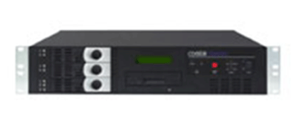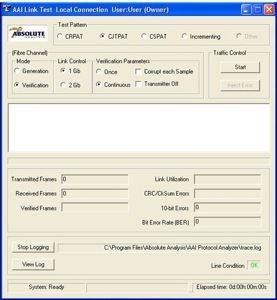NextGig Systems, Inc. - Network Connectivity & Test Solutions

Bit Error Rate Testing BERT Test Physical Links




Resources
Questions? Call 1-805-277-2400
For more information, pricing, demonstration or evaluation on Protocol Analyzers please contact us here.

Investigator™ Bit Error Rate Tester can work alone to test data delay effects on your storage network or devices and test the quality of the physical layer connectivity. It can also work in conjunction with Investigator™ Protocol Analyzers to perform the complete tests, from physical layer to upper level protocols.
Our BERT can work with Investigator™ Traffic Generators and Investigator™ Protocol Analyzers to give you the freedom for complete testing, from physical layer connectivity to upper layer protocols, and from static protocol analysis to dynamic protocol analysis.
By working with our Investigator™ Protocol Editor and Investigator™Application Software, you can generate custom test patterns for a custom application, and use the feature-rich Drag & Drop, trigger and filtering capabilities, as well as Library API for test automation.
An invaluable tool for manufacturing, development engineers, and field service engineers
- Generate multi-speed, multi-application, and custom test patterns
- Verify and validate lowest level connectivity down to 10-12
- Support up to 32 ports of testing
The Absolute Analysis Investigator™ Bit Error Rate Tester (BERT) supports multiple speeds, from 1Gbps to 4Gbps, and generates test patterns for Fibre Channel, Ethernet, sFPDP, and many other physical layers.
Investigator™ BERT can support up to 32 channels of testing within a single enclosure and is ideal for manufacturing and development laboratory applications.
Users can select from test patterns provided by Absolute Analysis or can create custom test patterns. Investigator™ BERT can detect error rates down to 10-12. BERT Viewer shows you not only where the error happened, but also when it happened, down to nanoseconds. It also has the capability to generate different forms of IEEE pattern and jitters, such as:
•CRPAT
•CJTPAT
•CSPAT
•Incrementing

Mobile Network Performance Tester
Related Products
Delay & Impairment Emulation
Bit Error Rate Testing (BERT)
Storage Emulation

All registered and unregistered trademarks are the sole property of their respective owners.
Products | Solutions | Store | Support | News | About Us | Why NextGig? | Employment | Privacy | Sitemap | Contact Us
Copyright © NextGig Systems, Inc. All Rights Reserved.